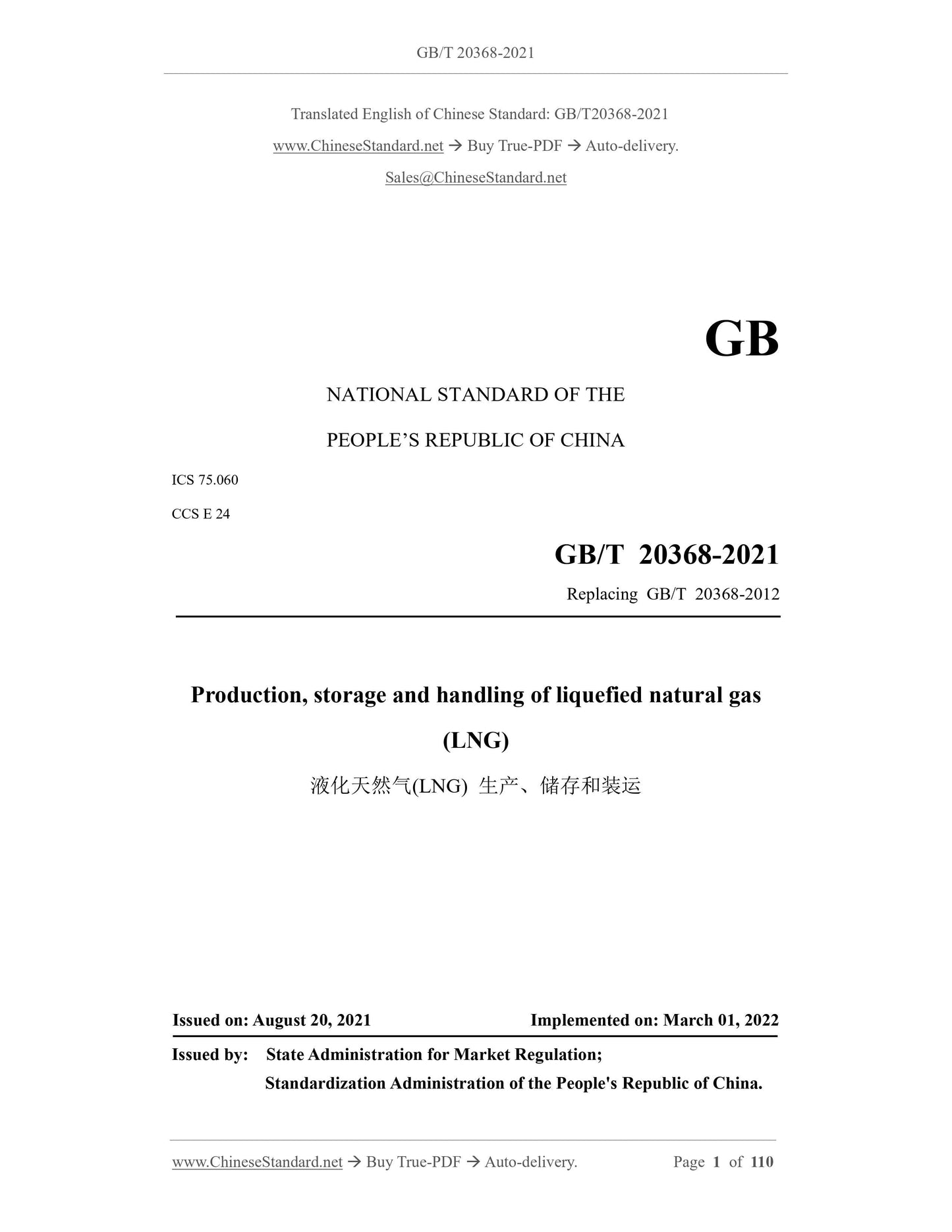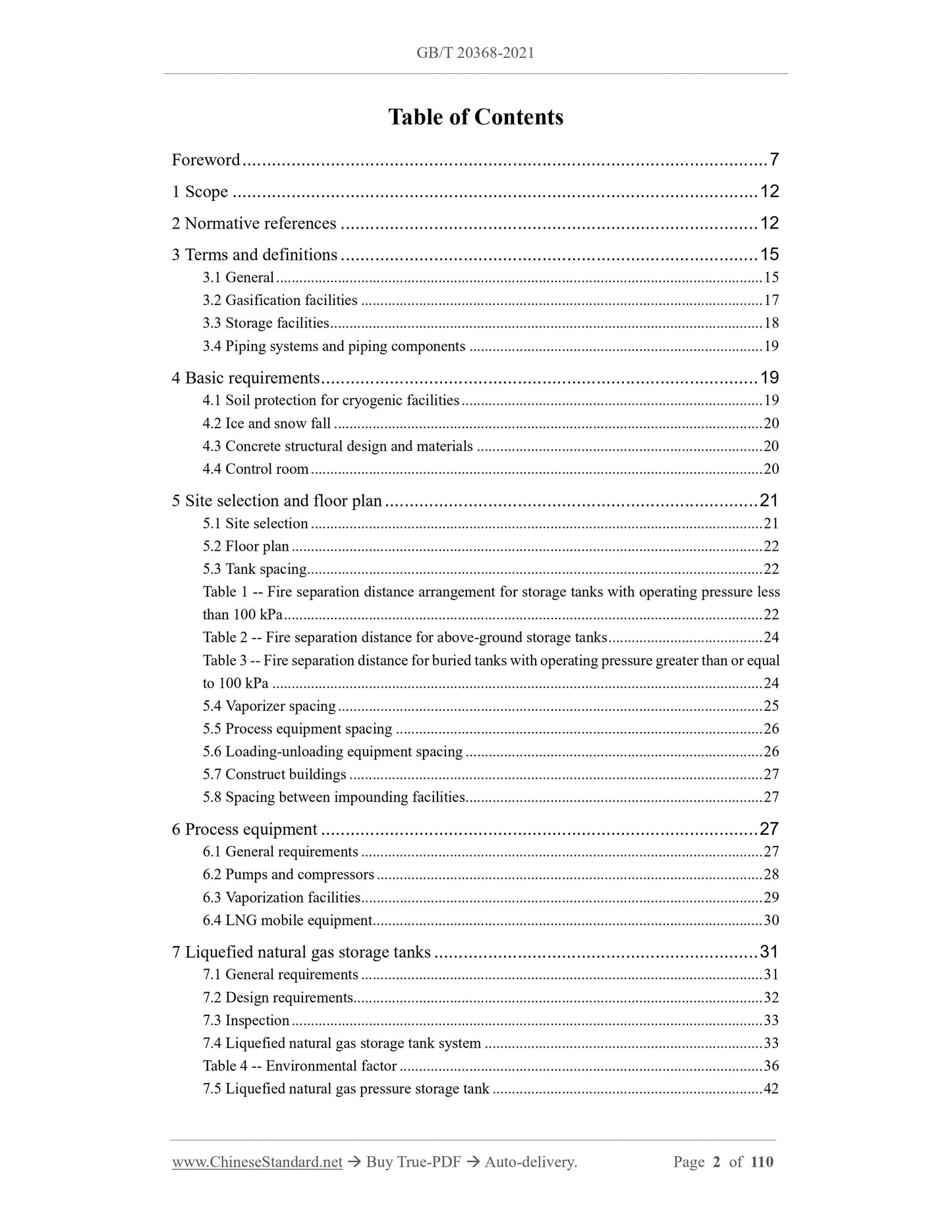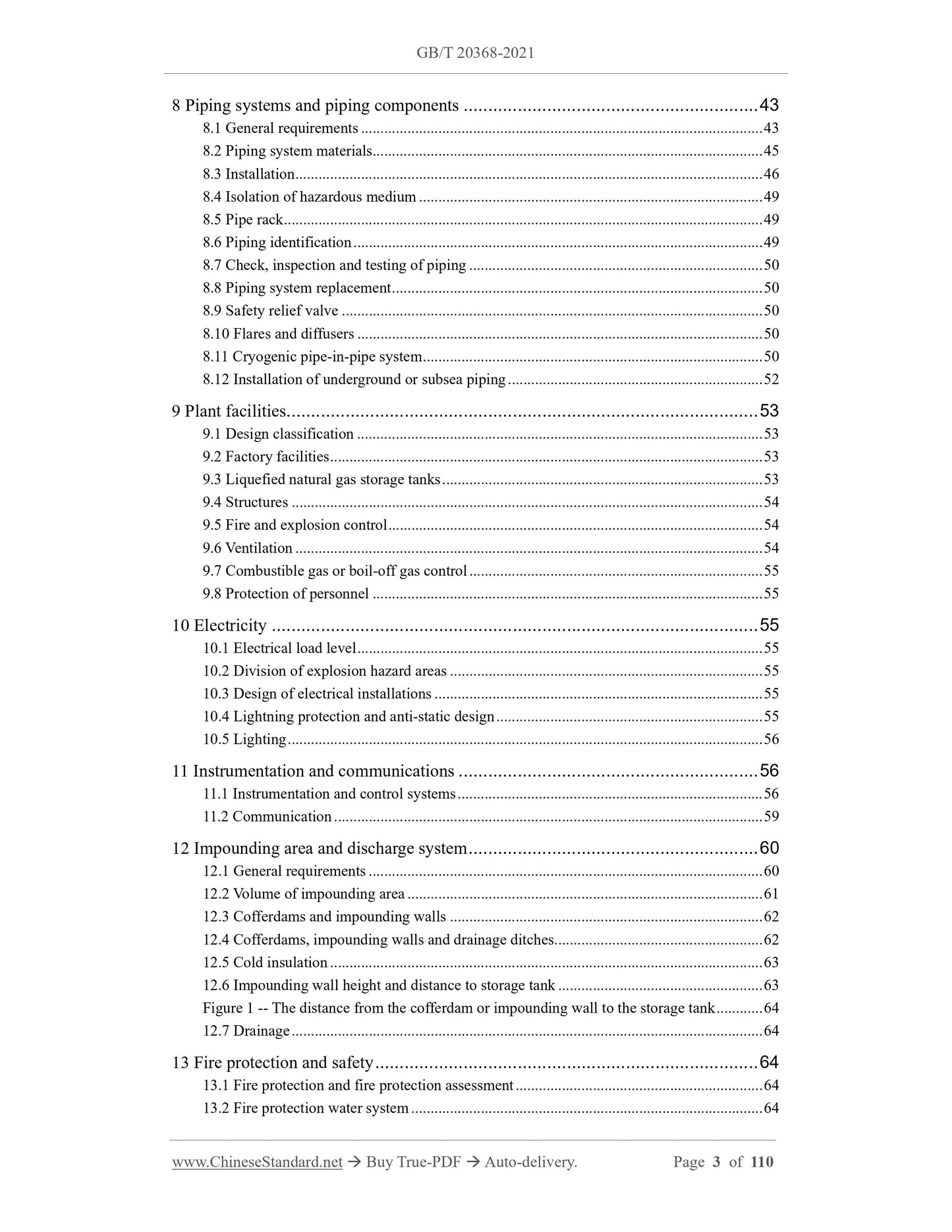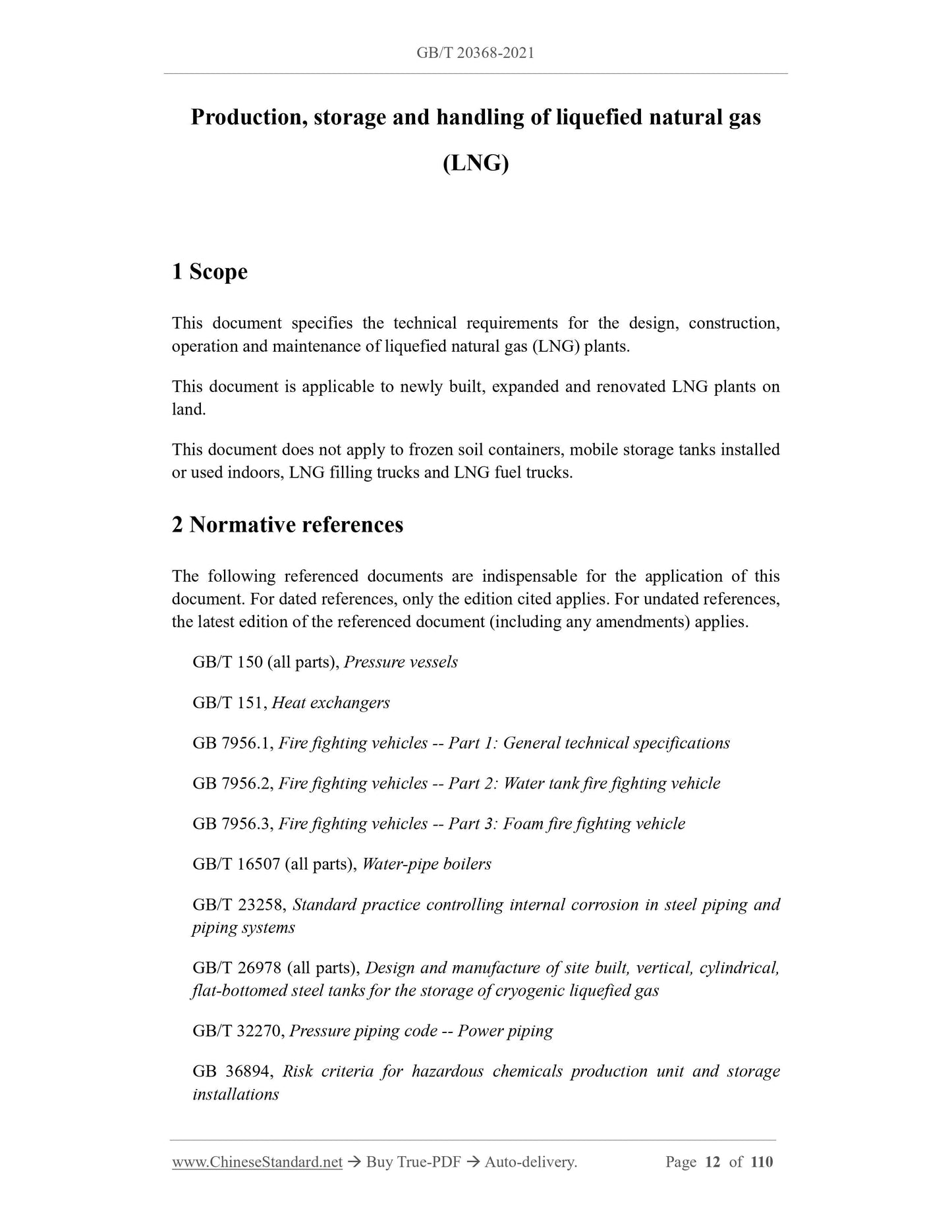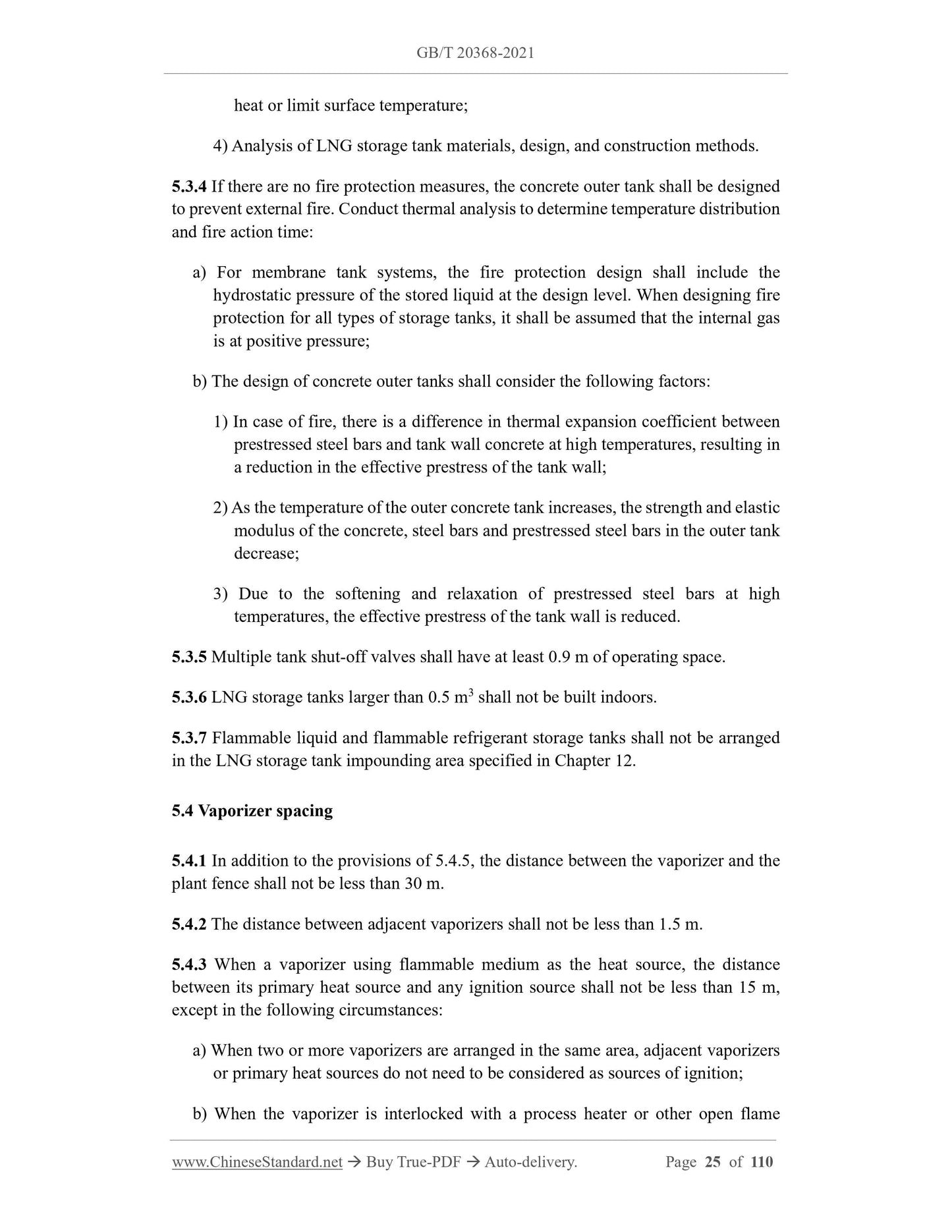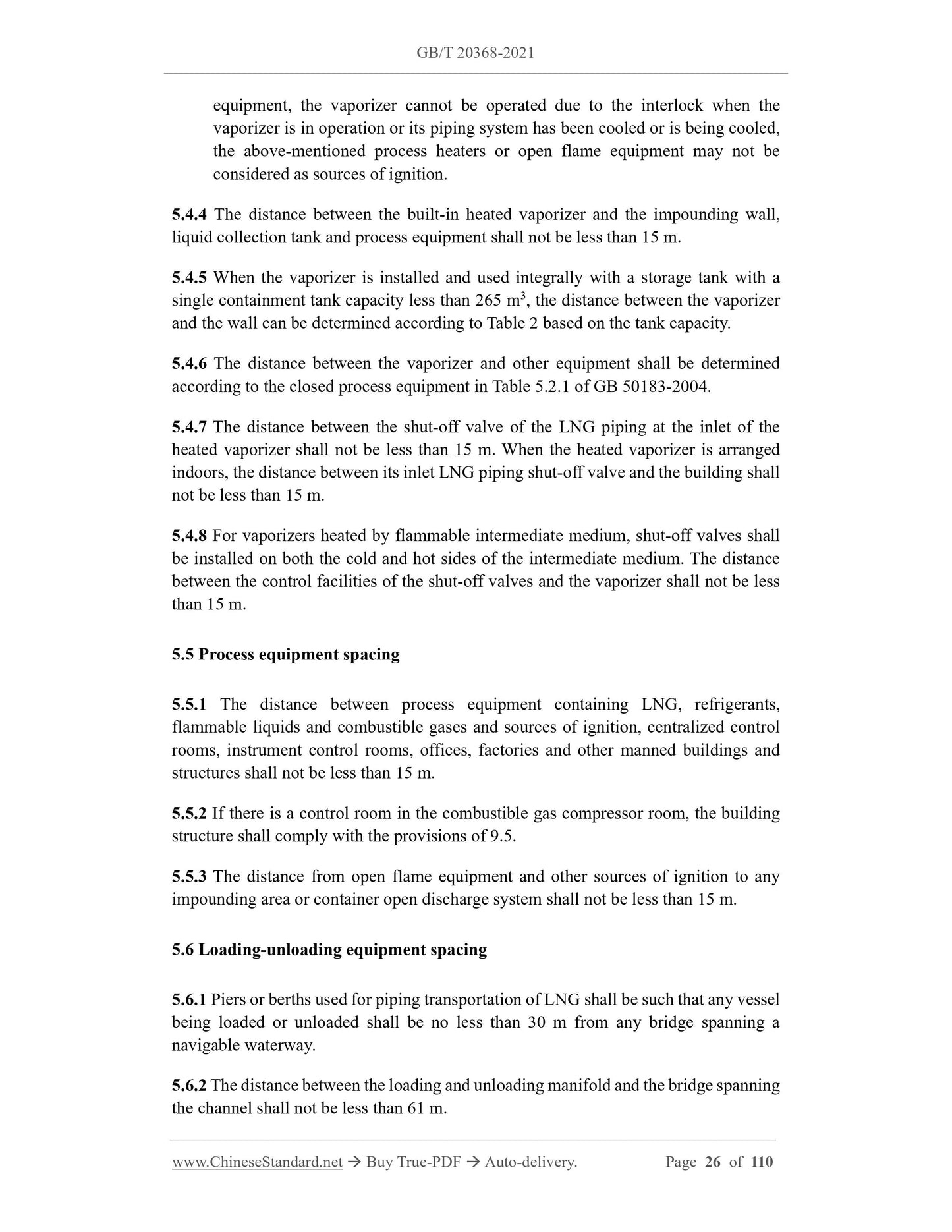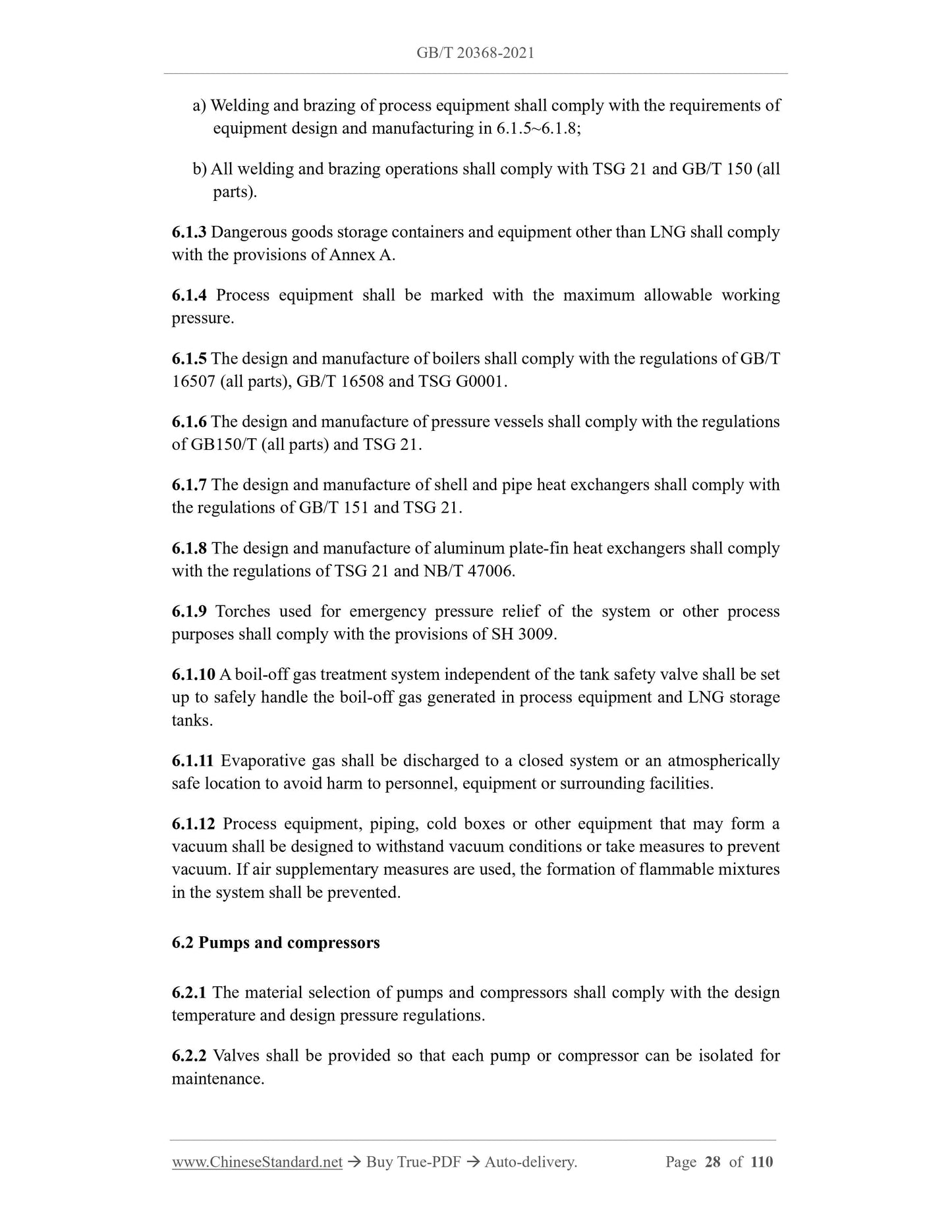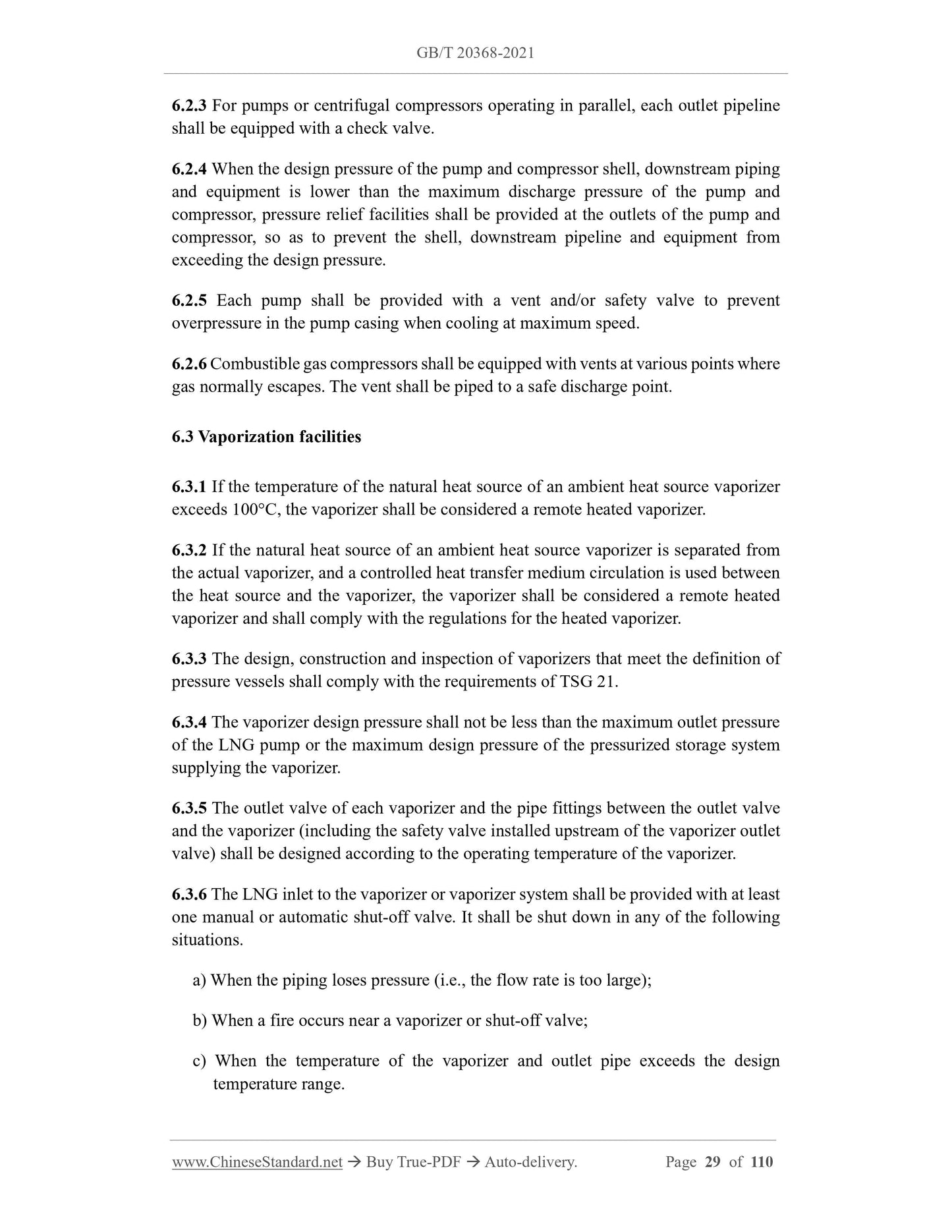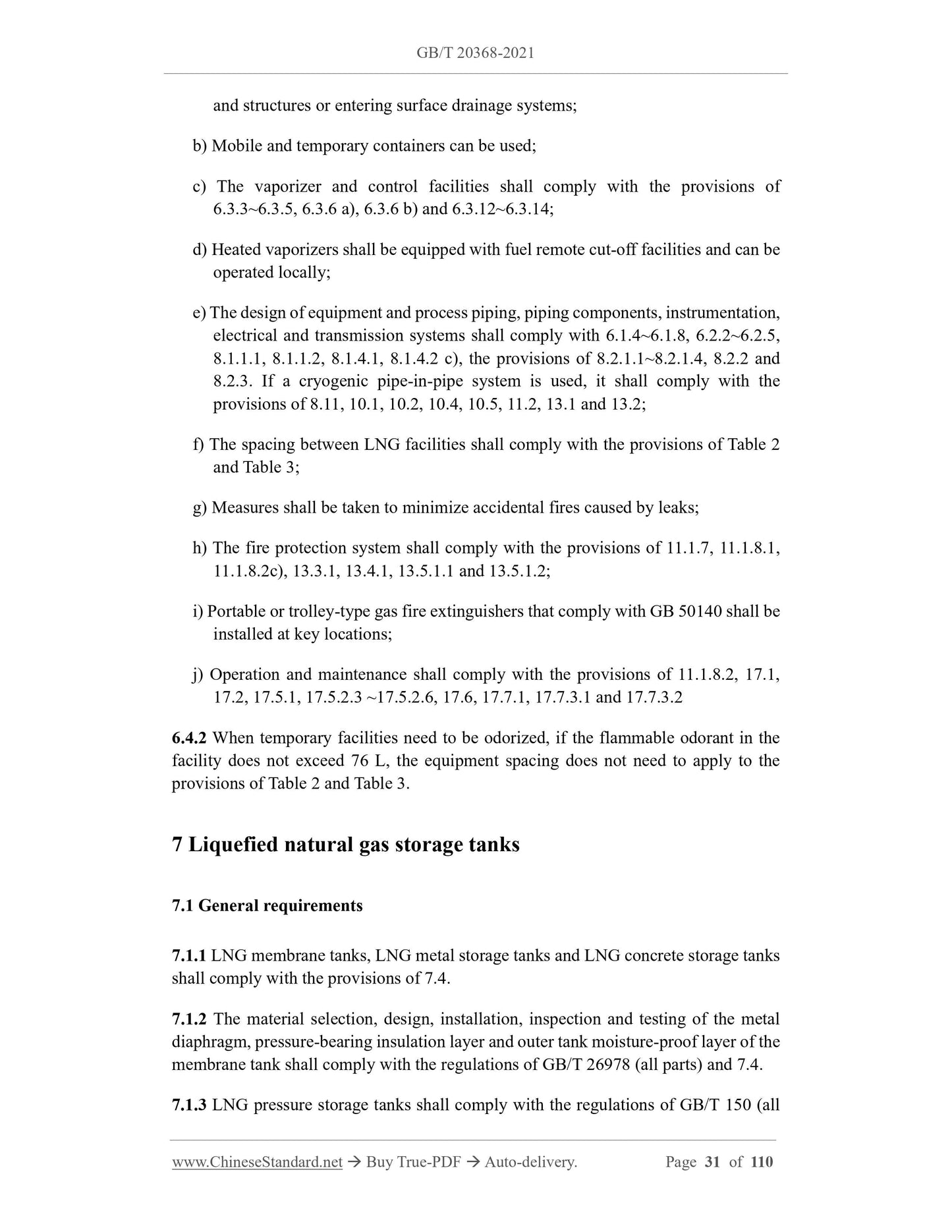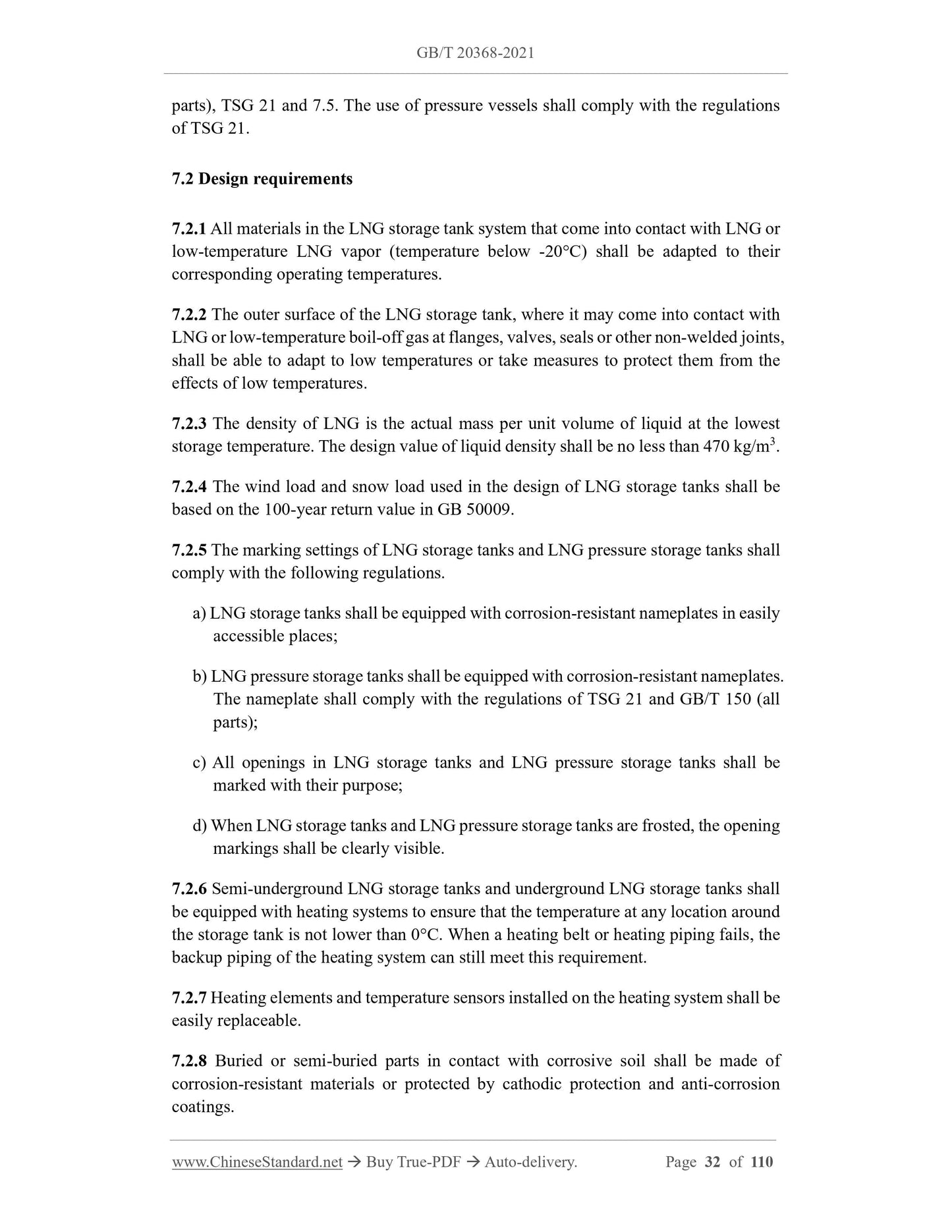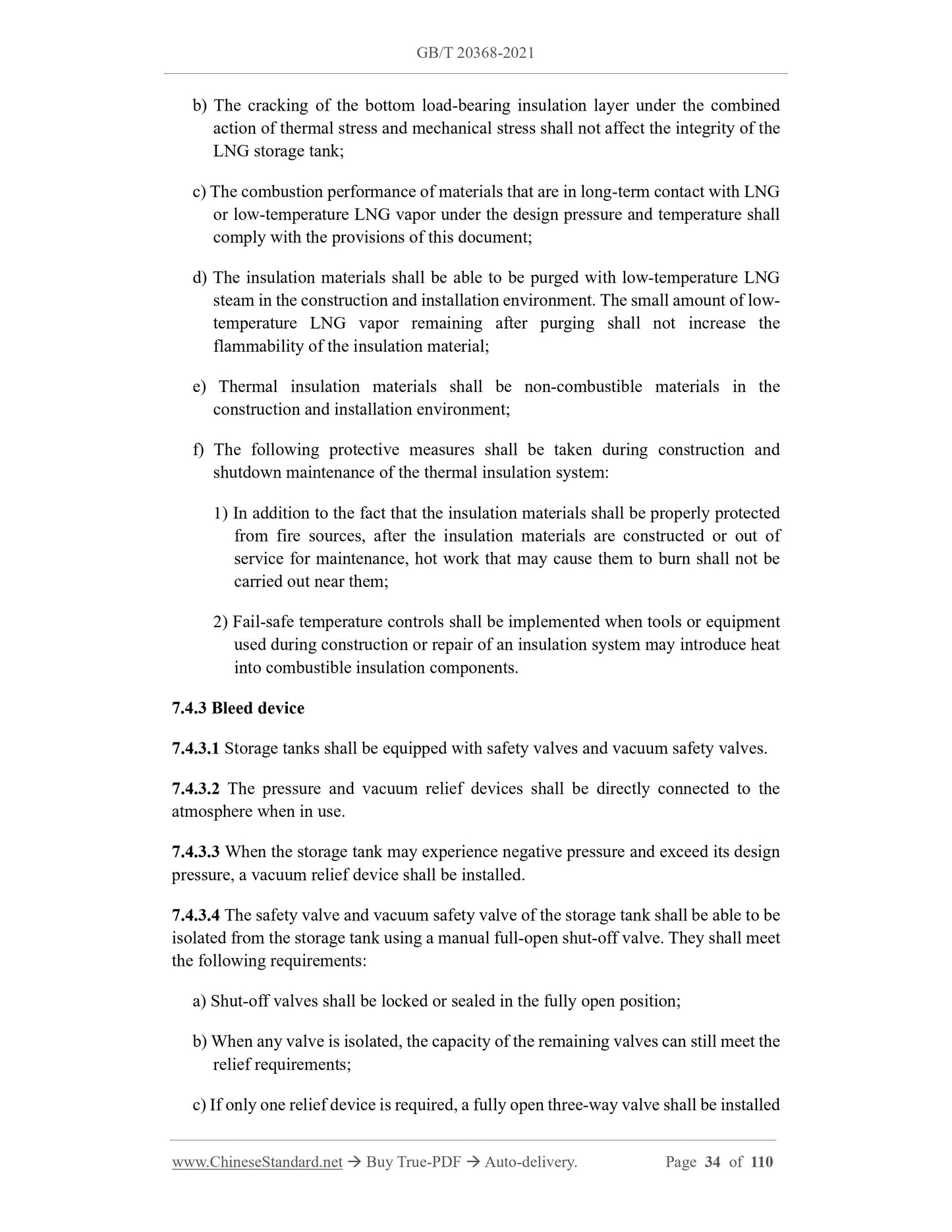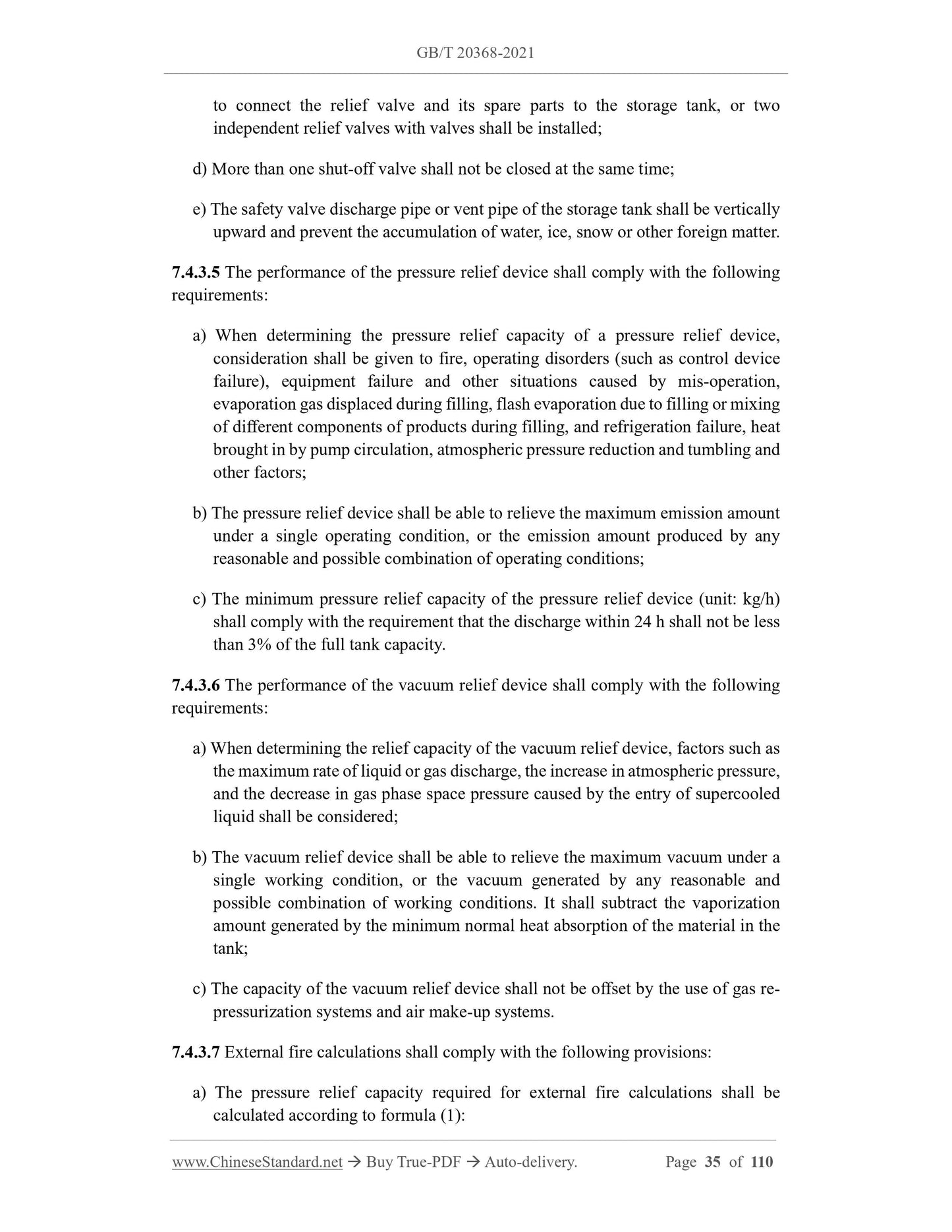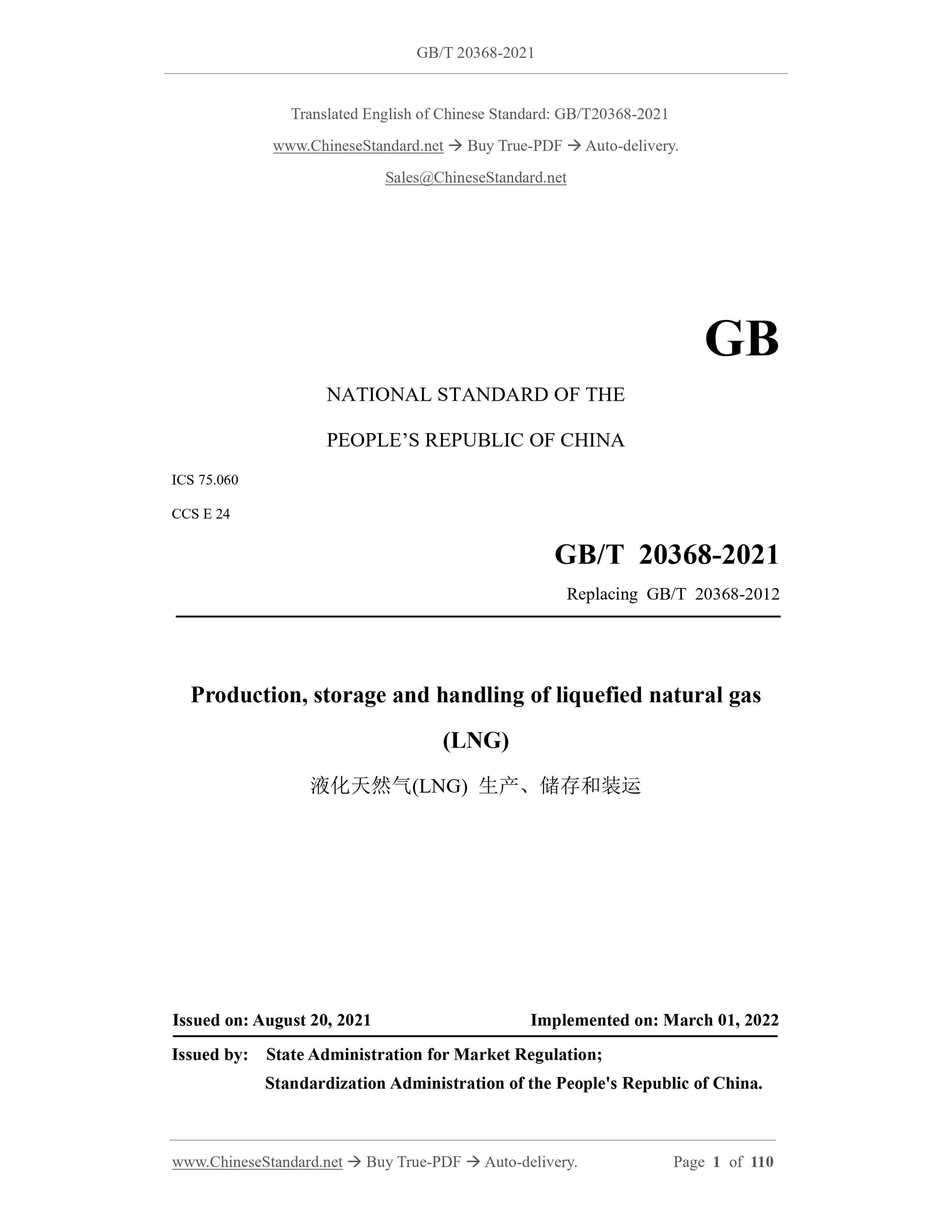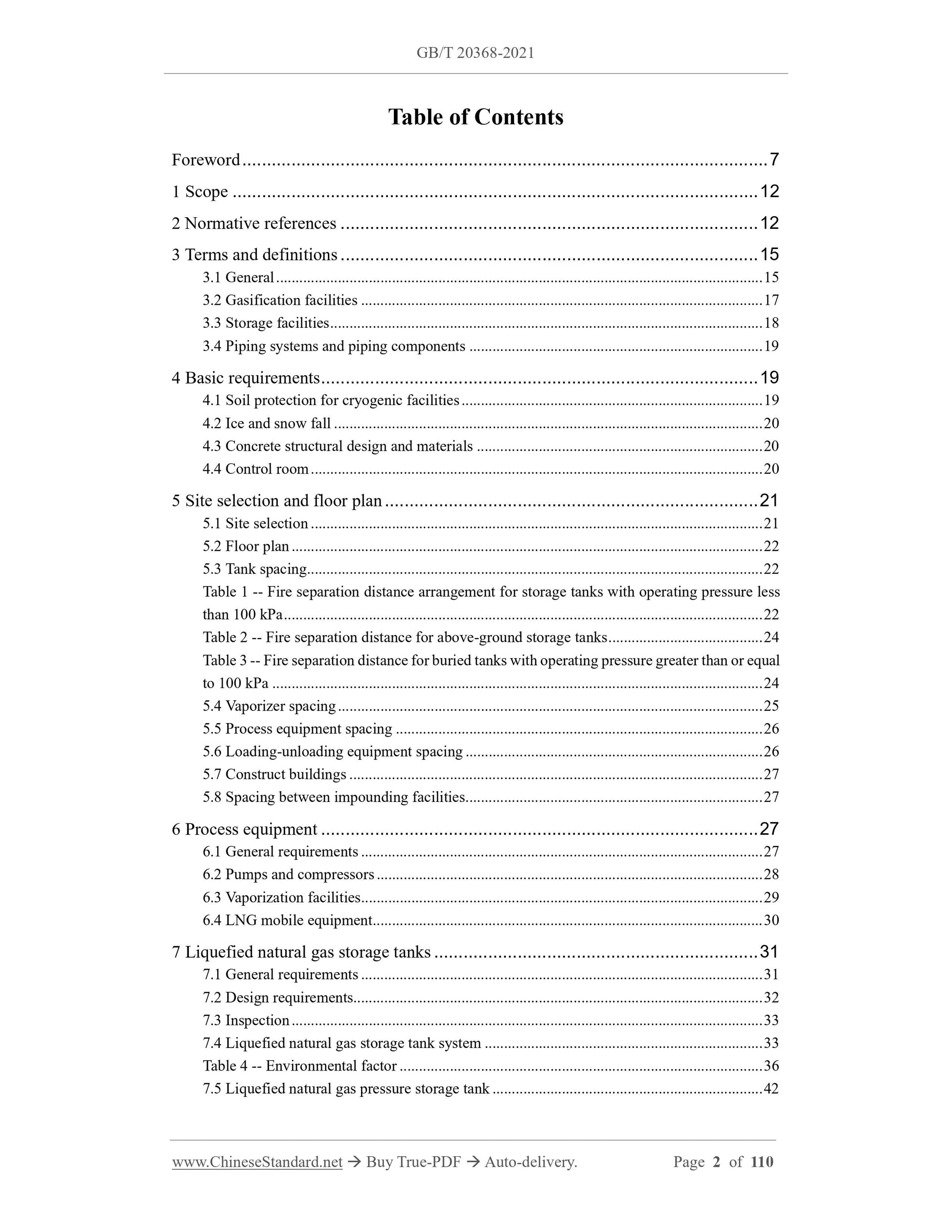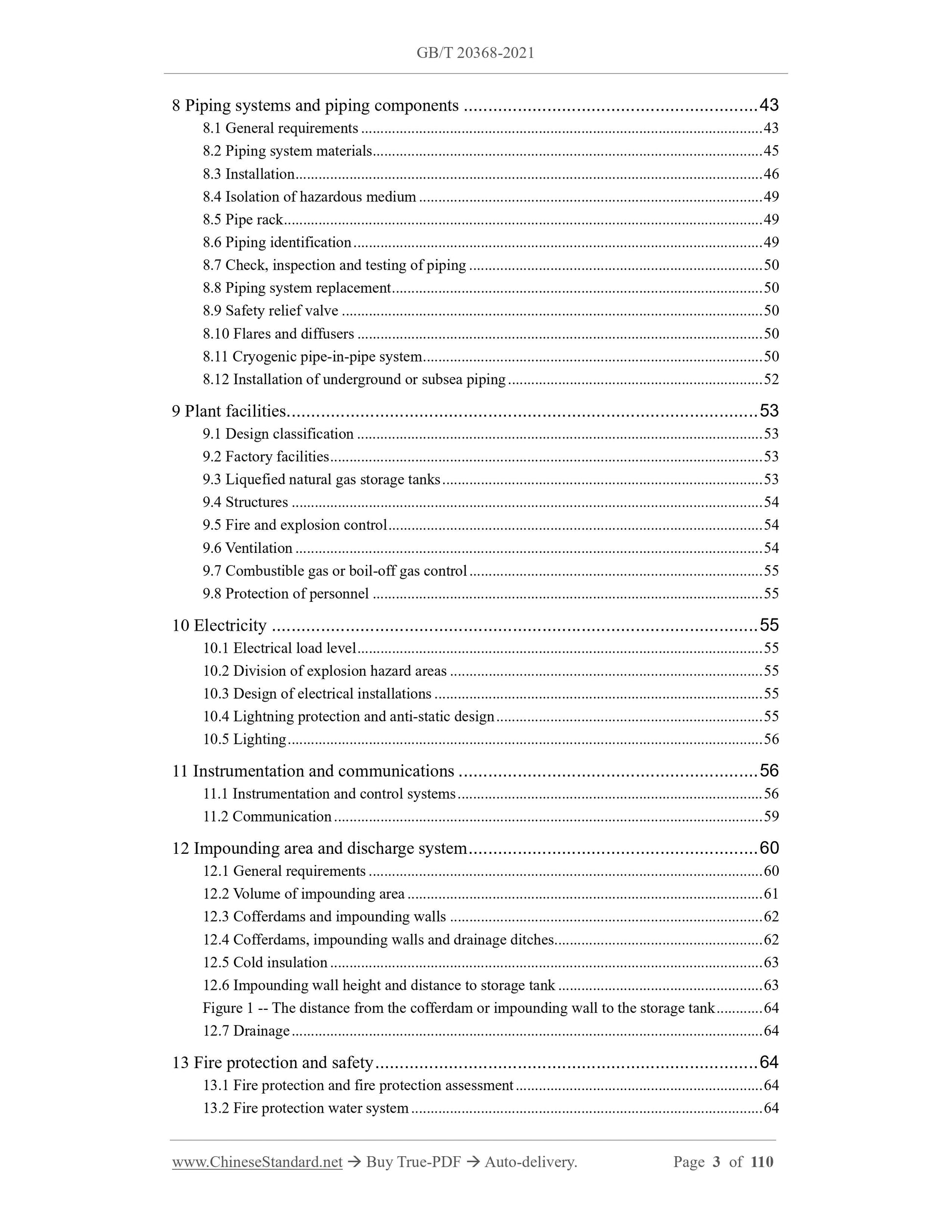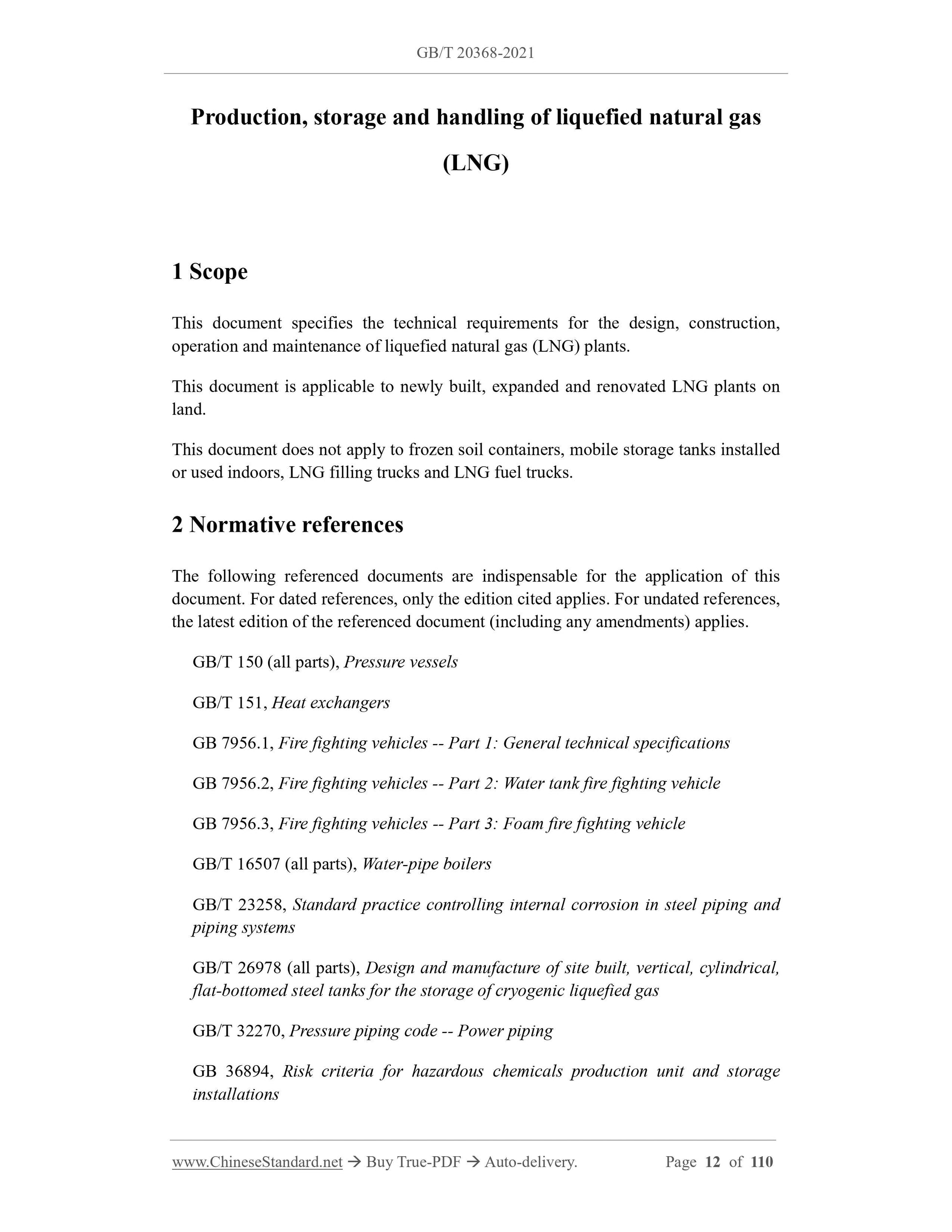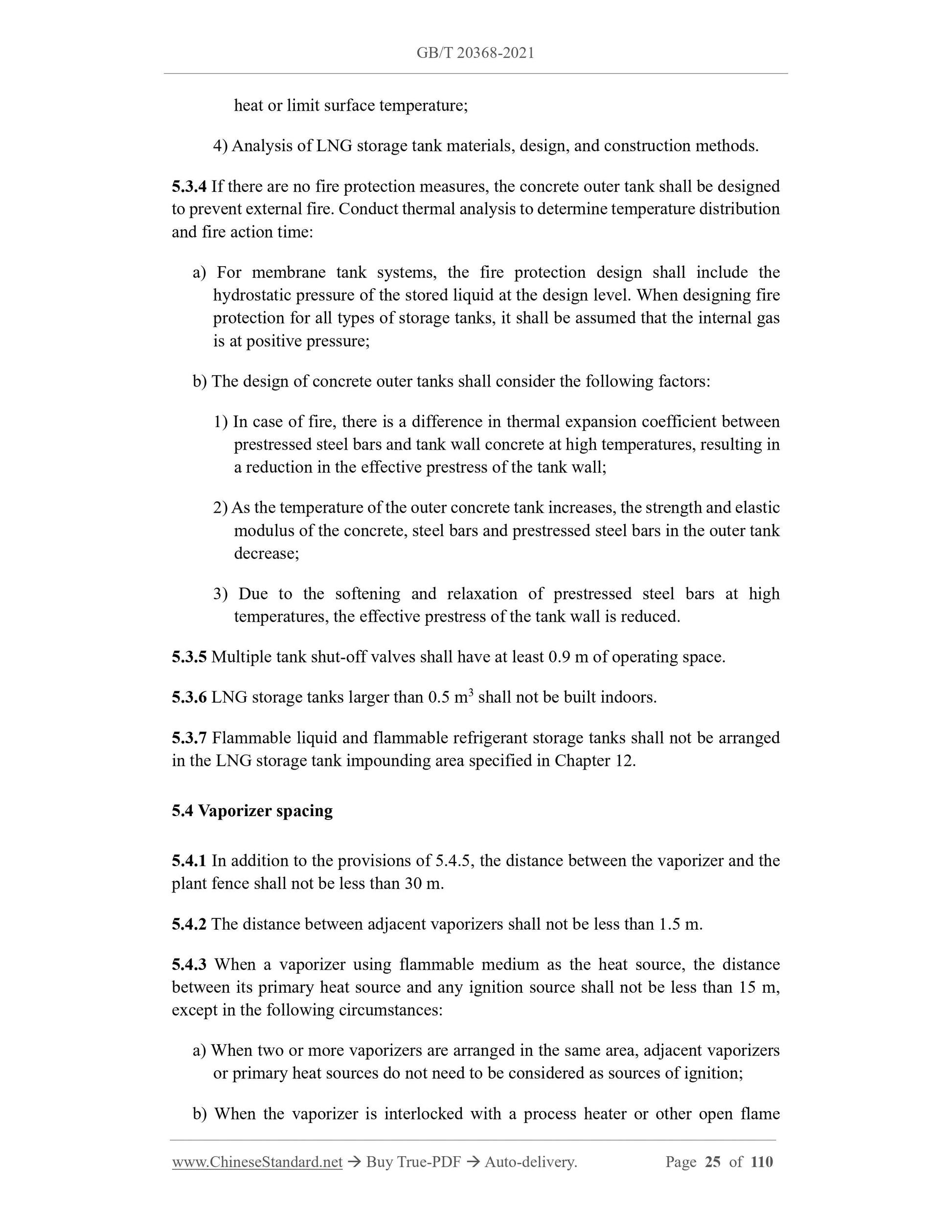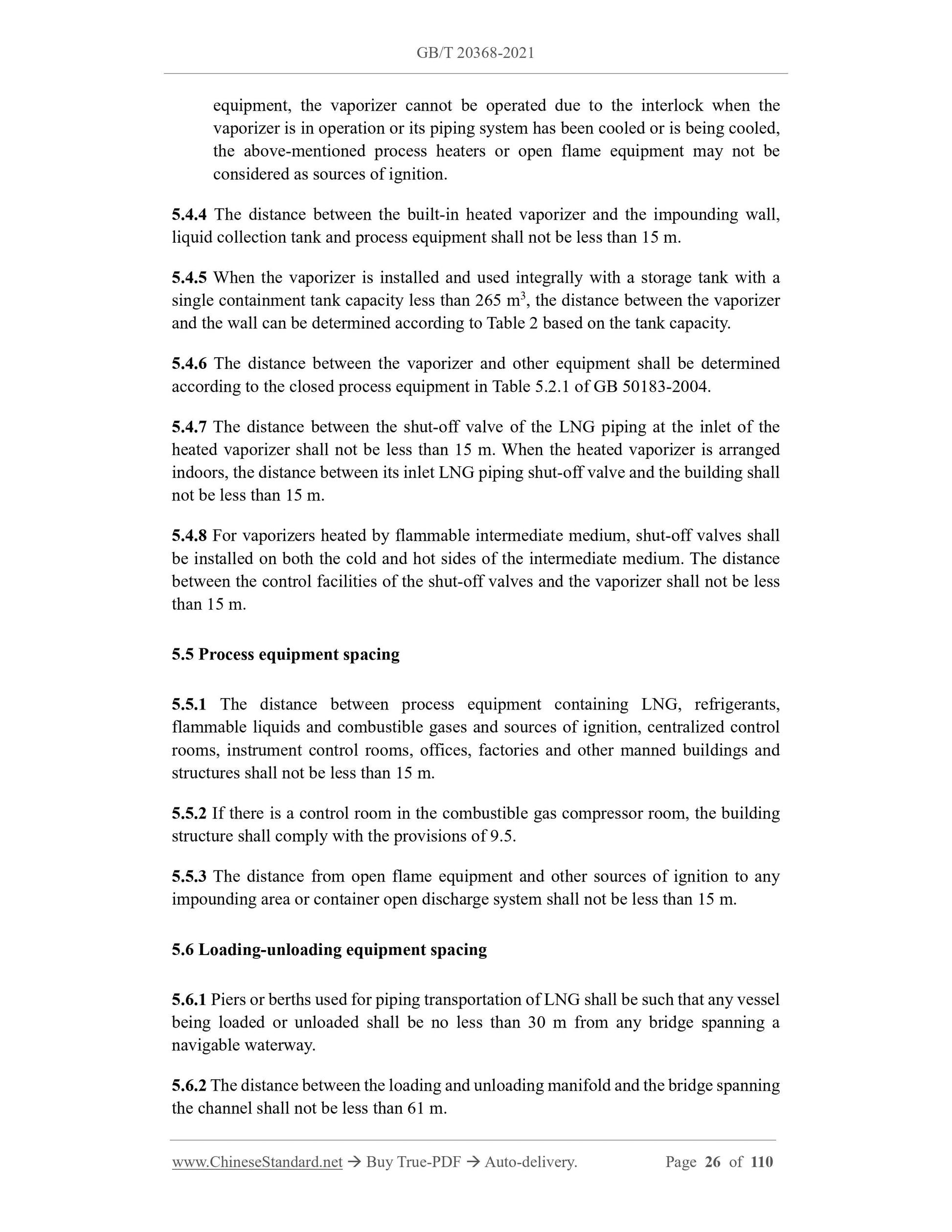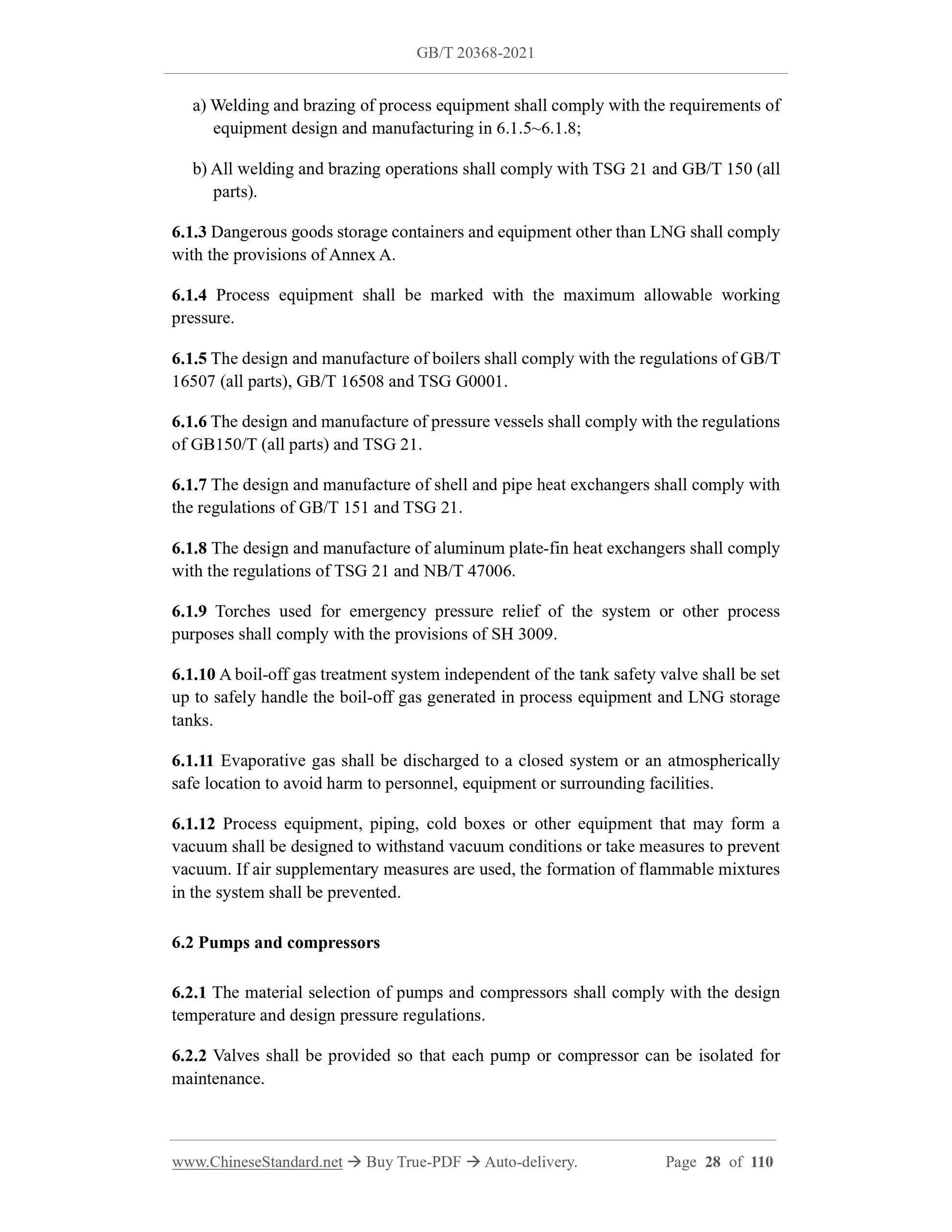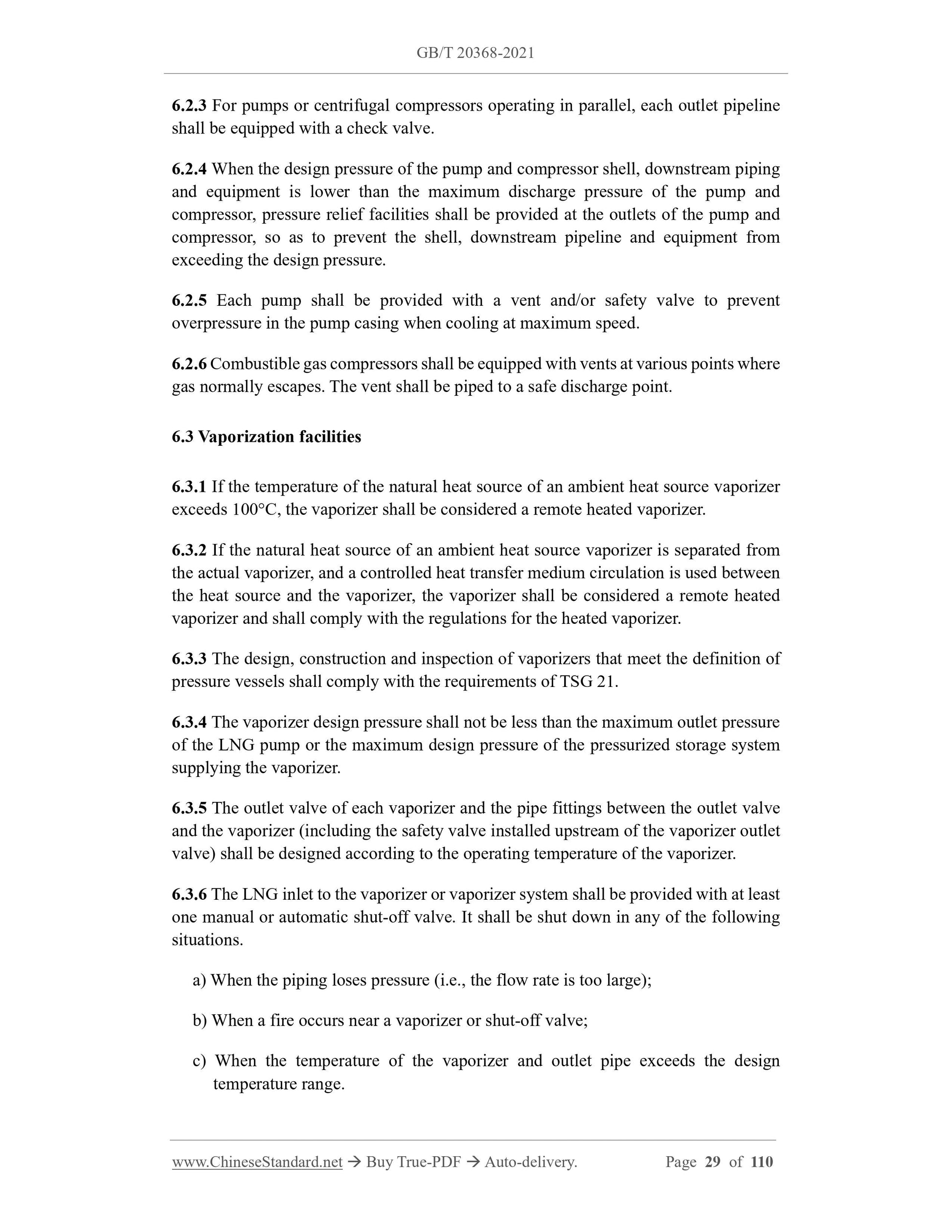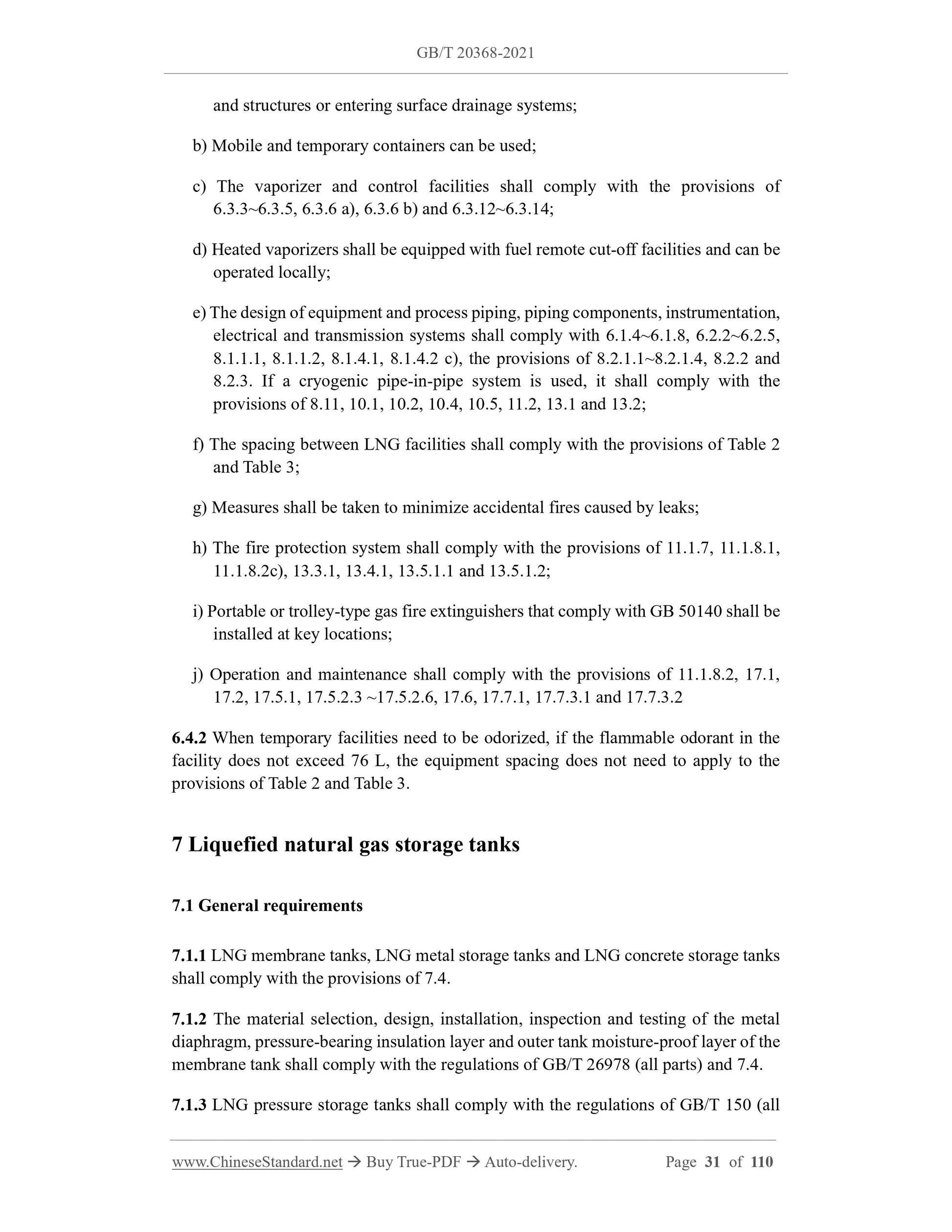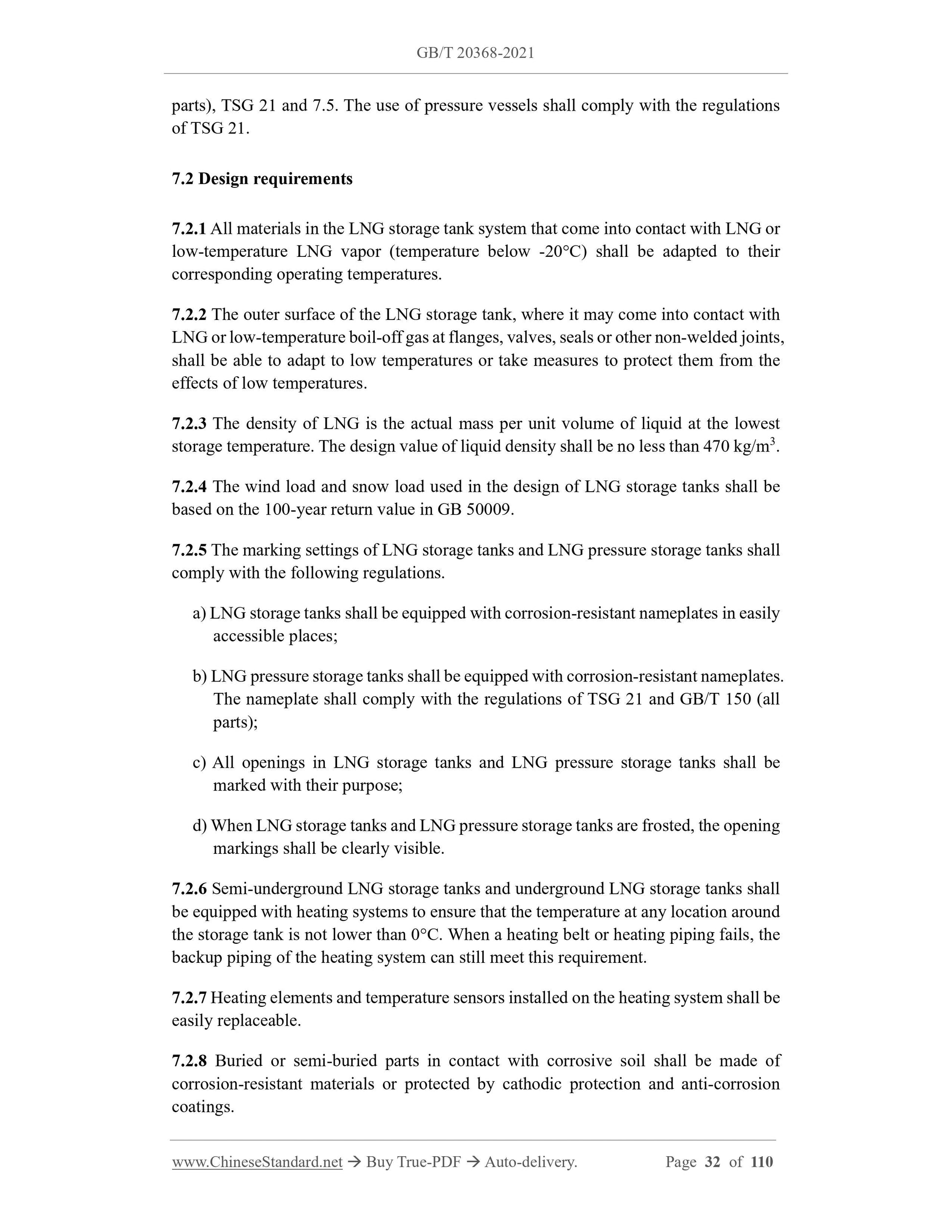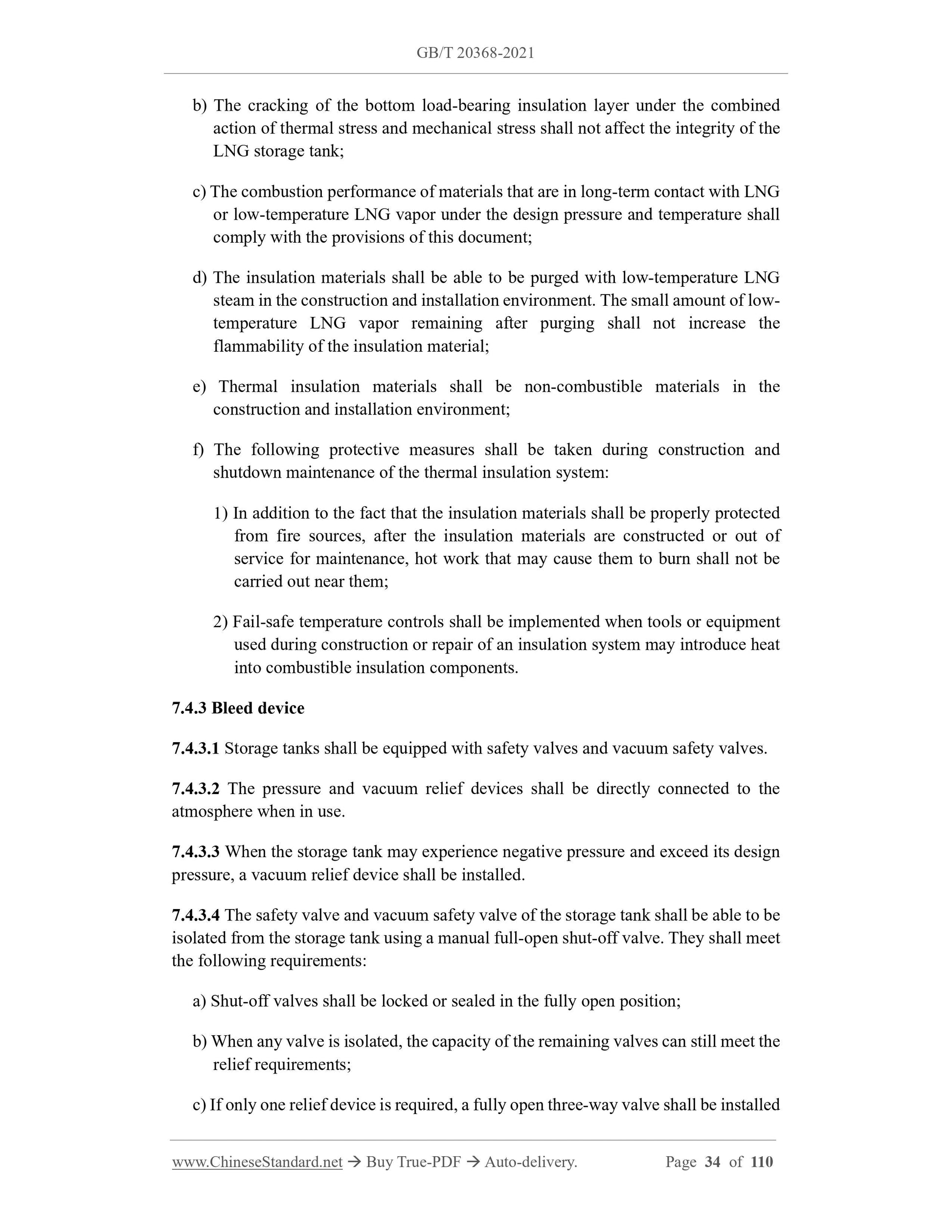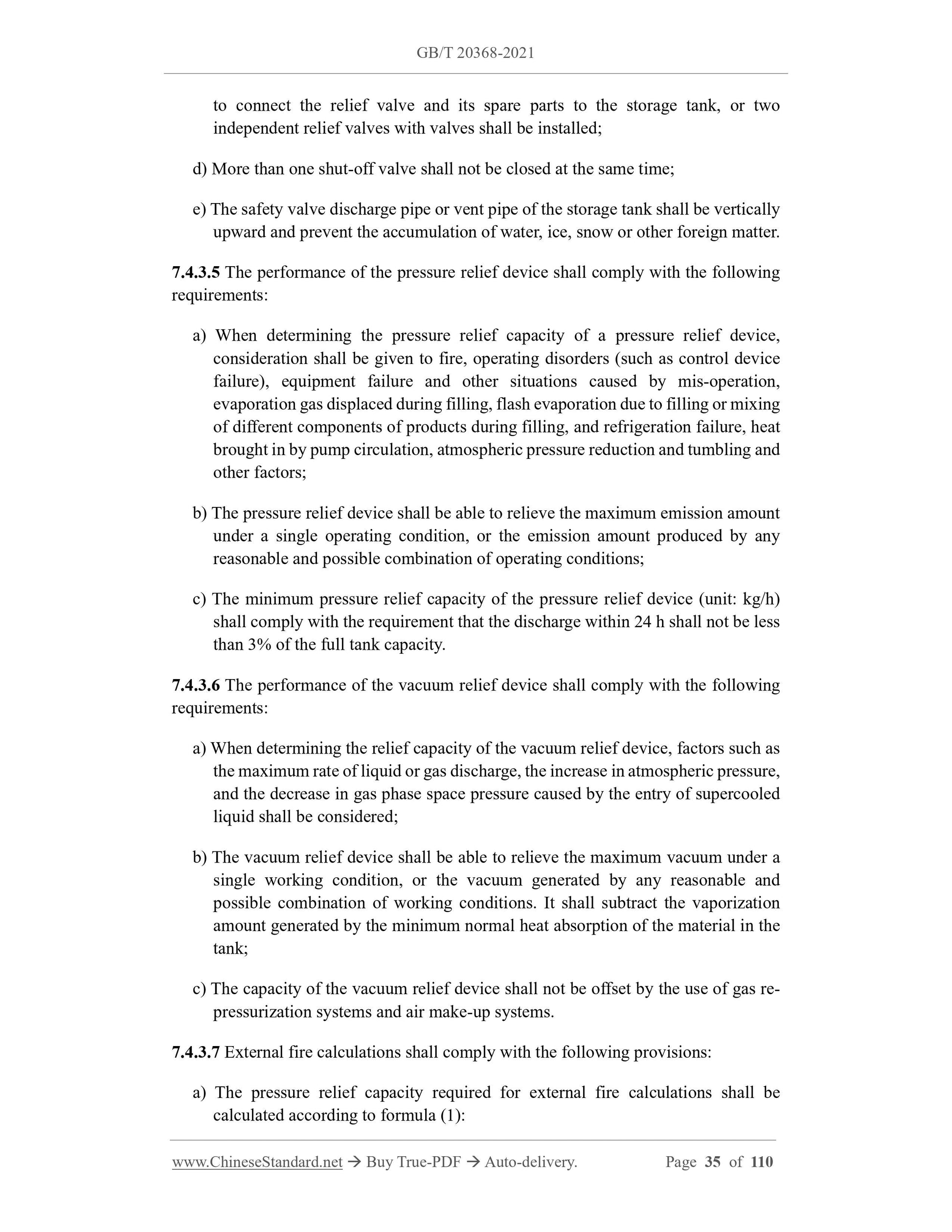1
/
of
12
www.ChineseStandard.us -- Field Test Asia Pte. Ltd.
GB/T 20368-2021 English PDF (GB/T20368-2021)
GB/T 20368-2021 English PDF (GB/T20368-2021)
Regular price
$905.00
Regular price
Sale price
$905.00
Unit price
/
per
Shipping calculated at checkout.
Couldn't load pickup availability
GB/T 20368-2021: Production, storage and handling of liquefied natural gas(LNG)
Delivery: 9 seconds. Download (and Email) true-PDF + Invoice.Get Quotation: Click GB/T 20368-2021 (Self-service in 1-minute)
Newer / historical versions: GB/T 20368-2021
Preview True-PDF
Scope
This document specifies the technical requirements for the design, construction,operation and maintenance of liquefied natural gas (LNG) plants.
This document is applicable to newly built, expanded and renovated LNG plants on
land.
This document does not apply to frozen soil containers, mobile storage tanks installed
or used indoors, LNG filling trucks and LNG fuel trucks.
Basic Data
| Standard ID | GB/T 20368-2021 (GB/T20368-2021) |
| Description (Translated English) | Production, storage and handling of liquefied natural gas(LNG) |
| Sector / Industry | National Standard (Recommended) |
| Classification of Chinese Standard | E24 |
| Word Count Estimation | 70,778 |
| Issuing agency(ies) | State Administration for Market Regulation, China National Standardization Administration |
Share
